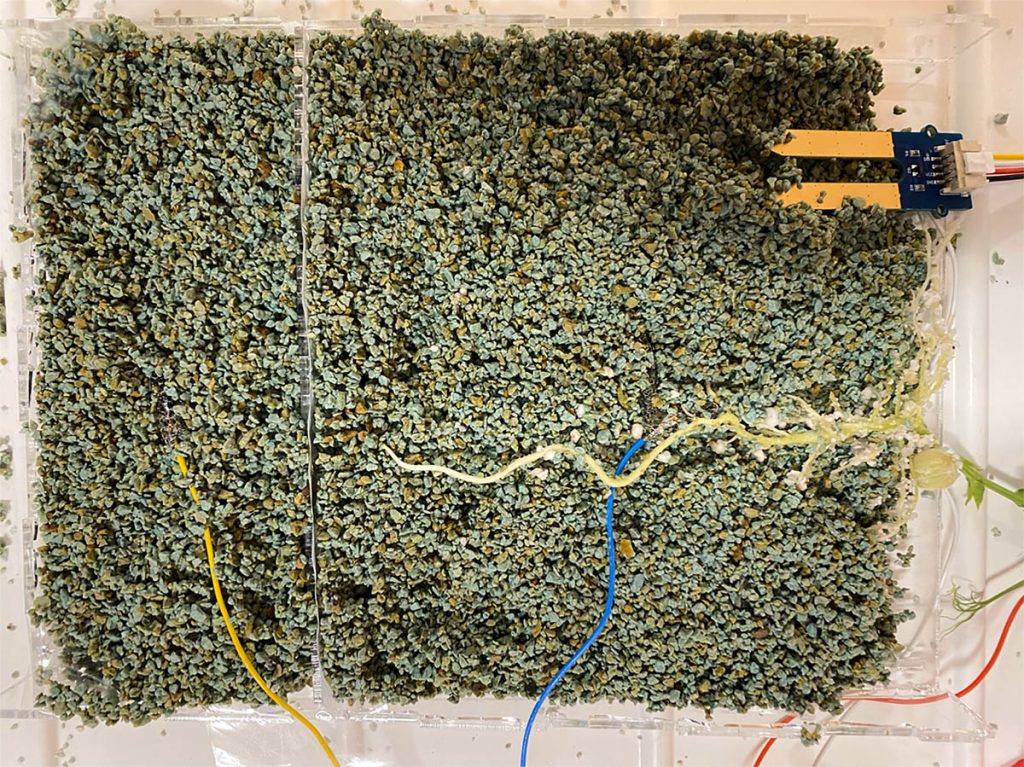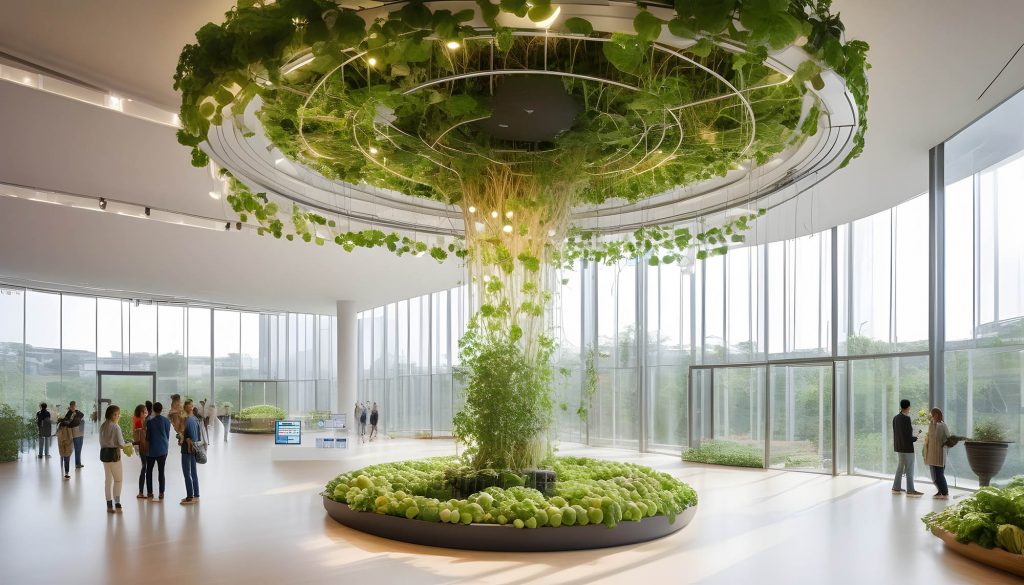HUNGRY ECOCITIES : Humanizing Technology Experiments
+ ECOSHROOM
Decoding nature’s underground dialogue
The Ecoshroom Rhizome Sensor Box is a hardware interface measuring electrical stimuli originating from the plant, mycorrhizae and the plant/mycorrhizae interface. Aside from the electrical signals, various ambient measurements are taken: light intensity, soil moisture, CO2 concentration, and relative ambient humidity. These signals are written periodically to an SD card for later post-processing and analyses.
INNOVATION RELEVANCE
A healthy soil microbiome refers to the diverse community of microorganisms living in soil that contribute to its overall health and fertility. This ecosystem includes bacteria, fungi, algae, protozoa, and other microscopic organisms. Many microbes form beneficial associations with plant roots, such as mycorrhizal fungi that help plants absorb water and nutrients, these relationships are crucial for soil and plant health. Mycorrhizal fungi form associations with 90% of land plants. There are different types, with Arbuscular mycorrhizae being the most common type. They extend the plant’s root system, access nutrients from soil pores too small for plant roots to enter, improve drought resistance, improve soil binding through the production of glomalin, contribute to carbon sequestration, protect plants from pests and diseases and form underground networks where they facilitate nutrient transfer between different species. Inoculating crops with mycorrhizal fungi can reduce the need for fertilizers and improve yields, especially in stressful conditions.
Only recently has the value of mycorrhizae to contribute to sustainable agriculture been recognized, and research into (1) understanding the molecular dialogue between plants and fungi, (2) exploring the potential of mycorrhizal fungi in climate change mitigation and (3) developing more effective inoculants for various agricultural systems is needed. Ecoshroom aims to contribute to these frontiers of knowledge and understanding by having developed a Rhizome Sensor Box capable of studying the molecular dialogue between plants and mycorrhizal fungi in many different scenarios and circumstances. Therefore, it can possibly be useful to developing inoculants for various agricultural systems by changing soils, spores, plants and conditions flexibly.

WHAT DOES IT DO
The Ecoshroom system measures what happens in the plant/mycorrhizae interface under controlled conditions (soil, temperature, light, CO2, humidity, electricity). The system is easy to install, consists of easily available components, and is relatively cheap. Therefore, it is scalable, allowing for many potential experiments into effective inoculation as well as molecular dialogue analysis.
ART RELEVANCE
Ivan Henriques‘ “Ecoshroom” unveils the hidden conversations between plants and fungi. Imagine a transparent wall pulsing with life, where the boundaries between home and nature blur into insignificance. This is the promise of Ecoshroom – a window into the subterranean social network that has been shaping our world long before we learned to cultivate it. Through this living lens, we witness the intimate tango between plant and fungus, a dance of nutrient exchange and mutual support that has sustained ecosystems for millennia. This living installation merges AI with biology, translating the silent language of roots and mycorrhizae into visible data. As humans interact, they trigger a chain reaction: robots nourish fungi, fungi feed plants, and machine learning algorithms decipher this subterranean social network. Ecoshroom challenges our perception of intelligence in nature, exploring fungal decision-making and its impact on crop resilience. By making the invisible visible, it reimagines our relationship with food systems and the environment. This interdisciplinary project offers a glimpse into a future where technology and nature collaborate, cultivating not just crops, but understanding.
TEAM
Artist: Ivan Henriques
Studio: EatThis
Art-driven innovation: In4Art
Science: Brno University of Technology

The HungryEcoCities project has received funding from the European Union’s Horizon Europe research and innovation programme under grant agreement 101069990.
